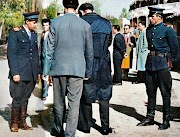The Italo-Albanians of Sicily
The Italo-Albanians of Sicily
Since the 15th century, a diaspora of Albanian-speaking people from the Balkans has been rooted in several Sicilian towns, including Piana degli Albanesi, Contessa Entellina, Mezzojuso, Palazzo Adriano, and S. Cristina Gela. Today, over 20,000 Arbëresh populate the parish of S. Niccolò dei Greci alla Martorana in Palermo. This Albanian ethnic group, established as an independent Eparchy (diocese) in 1937, forms a unique linguistic enclave that captivates tourists and scholars alike.
Fully integrated into the social, cultural, and economic fabric of Sicily, their adopted homeland, the Albanian exiles have become Sicilians while preserving their Albanian identity through language, customs, and, most notably, their Greek-Byzantine religious tradition. The Arbëresh of Sicily maintain a vivid consciousness of building a community and a national church centered around their Bishop, regarded as a charismatic leader. Their presence in Italy is bolstered by a shared and illustrious Eastern heritage that continues to connect them to a broader historical and cultural family.
Their church, entirely Byzantine in its sacred hierarchy and rites yet situated within the territory of the Western Latin Church, remains true to its Eastern ecclesiastical identity despite challenges. Today, it renews its awareness of a dual purpose: to sustain itself and to act as a vital bridge between the Catholic and Orthodox Churches, fostering dialogue and mutual understanding.
Java e Madhe
The rites of the "Holy and Great Week," preceding Easter—referred to by Italo-Albanians as "Java e Madhe"—are celebrated with the distinctive harmony of the Byzantine East. Solemn liturgies take place amid the scent of incense and the gaze of sublime icons, ancient and modern, inspired mainly by Cretan Byzantine art. Choirs of young people and women in richly embroidered silk costumes sing melodious hymns that echo their Balkan origins, making the ceremonies a vivid reminder of the Byzantine influence that shaped Sicily’s spiritual and cultural life for a millennium.
Easter Tradition in Piana degli Albanesi
The Byzantine Easter celebration is most vibrant in Piana degli Albanesi, the most prominent of the Albanian-founded colonies. The liturgy, conducted in Greek, fulfills the Mass obligation and is celebrated by the Bishop and priests of the Eparchy in St. Demetrius Cathedral, adorned in ornate gold and silver vestments. The traditional chants are nostalgic yet solemn, reminiscent of the Byzantine traditions still alive in the Patriarchate of Constantinople.
After the sacred ceremony, local women dressed in 15th-century costumes—reminiscent of the opulent court attire of Byzantine nobility—parade through the town, culminating in the blessing of symbolic red eggs in front of the Odigitria Church.
Easter Celebrations in Contessa Entellina
Contessa Entellina, founded by Albanian soldiers in 1450, is a village in Sicily’s western Belice Valley that still preserves Albanian language and traditions. Despite being Catholic, many residents adhere to the Greek-Byzantine rite. The town also features ancient historical and artistic remnants, such as Rocca Entella, Castle Caltamauro, and the Abbey of S. Maria del Bosco.
During Easter, the local parishes jointly stage the “Finzioni di Pasqua,” a theatrical portrayal of Christ’s Death and Resurrection. This tradition, rooted in a medieval European Christian spirit similar to English Mystery Plays, continues today in Sicily with celebrations like the Mysteries of Trapani and the Finzioni of Contessa. These performances, featuring elaborate floats and biblical scenes, are known as “Funzioni,” symbolizing the portrayal of historical events that occurred two millennia ago.
Local residents, temporarily setting aside their daily roles, embody characters such as Christ, soldiers, and priests. While past castings reflected individuals’ professions, today, acting skill is the primary criterion. Currently, the Death of Christ is performed in the version of “The Redemption of Adam,” a 1750 play by Filippo Orioles.












0 Comments